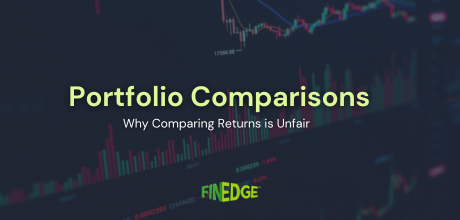Should You Shift Your RD’s to Mutual Fund SIP’s?

With the ubiquitous chime of “Mutual Funds Sahi Hai” sounding in every other ad break, it was a matter of time before Mutual Fund Investments piqued the interest of a hitherto untapped segment of investors – those who had never looked beyond fixed deposits or recurring deposits to deploy their idle money.
This begs the question – is it indeed a wise move for long term FD and RD aficionados to step onto the Mutual Fund Bandwagon? Well, certainly not without the due consideration of a few really critical factors.
First and foremost – have you understood how Mutual Fund SIP’s are different from RD’s?
While RD’s afforded you the comfort of an assured and steady rate of return in the form of interest, Mutual Fund SIP’s work entirely differently. If you’re getting into a SIP in an Equity Oriented Fund, you are in fact, taking a quantum leap forward in terms of taking on risk. Mutual Fund SIP’s do not provide steady or linear returns in the manner that RD’s do. In fact, there may be extended phases that last up to two years, wherein your SIP returns will remain flat or even negative! If this is something that is a deal for you, do not switch your RD’s to Mutual Fund SIP’s
Secondly, have you adjusted your expectations accordingly?
As a long-term RD investor, you probably never gave a second thought to the ups and downs of the markets, and how they would impact your net worth! Your interest was credited to your bank account at periodic intervals like clockwork, and you had nothing to worry about (except, perhaps, your bank going belly-up!). Mutual Fund SIP’s work differently. Your investments will go through cycles of non-performance and outperformance; but in the long run, rupee cost averaging and compounding will jointly work their magic to create wealth for you. Ask yourself – have you reset your personal expectations from this investments in accordance with the above stated, or are you still stuck in your old “periodic interest” mindset? If you’re unable to make this vital adjustment, perhaps Mutual Fund SIP’s aren’t your cup of tea.
Lastly, and importantly – have you assessed your reasons for considering the switch from RD’s to Mutual Fund SIP’s?
Is it to make a quick buck in the short run, or simply because you were ‘frustrated’ with the low post-tax returns that RD’s had to offer? The only RIGHT reason to switch your RD’s to Mutual Fund SIP’s is to generate significantly higher compounded returns over the long term. Consider this, your RD of Rs. 10,000 per month, growing at an annualised rate (post tax) of 4.5% per annum for 20 years, will yield you 38 Lakhs. A Mutual Fund SIP generating 12% CAGR could potentially yield you Rs. 1 Crore over the same period and for the same monthly savings amount. The obvious price to pay in this scenario is an element of higher risk, and no more ‘stable’ returns. Make sure you’re not switching for the wrong reasons – if you do, it’ll surely come back to haunt you in the form of regrettable investment decisions!
Your Investing Experts
Relevant Articles
Regular Savings Plan: A Balanced Approach to Stability and Growth
Not every investment in a portfolio is meant to maximise returns. Some are meant to preserve capital, manage volatility, and provide predictability. A regular savings plan serves exactly this role. It is designed for investors who want a more measured approach where stability takes priority, and growth plays a supporting role rather than the lead.
From Coffee to Crorepati: Small Lifestyle Tweaks Gen Z Can Make to Start Investing Early
Gen Z is often told to “stop buying coffee” if they want to invest. But that misses the point. Building wealth isn’t about sacrificing everything you enjoy. It’s about understanding how small, everyday decisions shape long-term habits. Starting early even with modest amounts can quietly make a meaningful difference over time.
Why Comparing Investment Returns Can Be Misleading
At some point, most investors have compared their investment returns with a friend, a colleague, or a number they saw online and wondered why their outcomes looked different. While this instinct is natural, return comparisons are often incomplete and, in many cases, misleading. Understanding why returns differ is far more important than comparing the numbers themselves.
.png)

.png)
